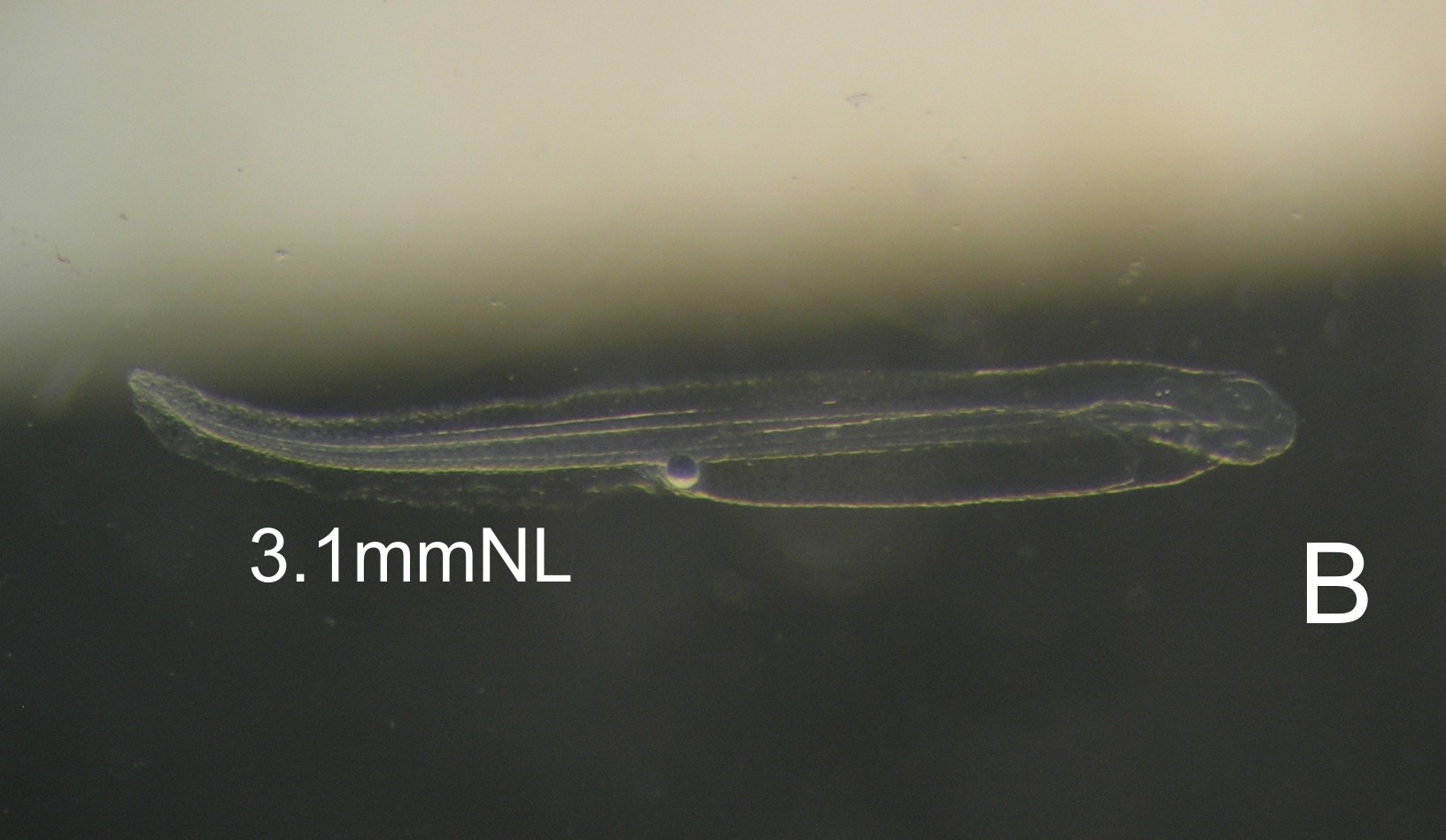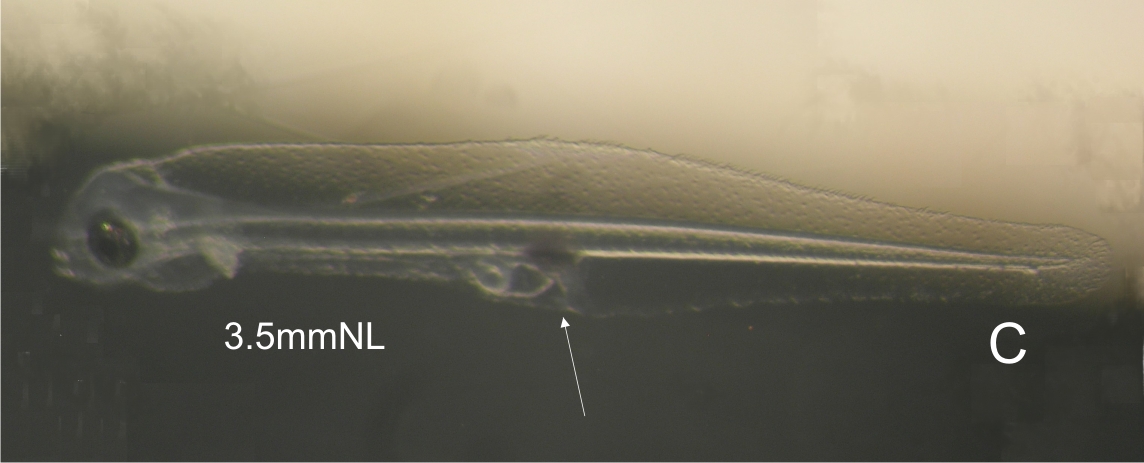Bothidae: L III C9C
Chascanopsetta lugubris Alcock, 1894.
Pelican flounder



|
Egg diameter in µm |
Number of oil globules |
Diameter of oil globule in µm |
Yolk texture |
Perivitelline space |
Position of oil globule at hatch |
Gut length at eye- pigment stage |
Myomeres |
|
915 |
1 |
145 |
clear |
moderate |
stern |
53% of NL |
ca65 |
.
Egg: This egg has only been recognised once. The yolk was rough surfaced, but clear, and the perivitelline space was moderate (Plate A). No pigment was seen in the egg. The lack of pigment, moderate perivitelline space, and small oil globule obviously positioned at the tail of the developing larva, combine to make this egg unique in the area, if these features are reliable. Incubation is probably about 24 hours.
Larva: The 36 hour-old larva was also devoid of pigment (B), but at 5 days a large dark pigment blotch was evident over the anus (C).
Fine spines adorn the finfold edge behind the gut, both dorsally and ventrally (C).
Thanks to DNA barcoding this single larva has been matched with 5 locally collected C. lugubris adults (BOLD). Confirmation awaits further larval barcodes.